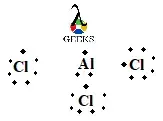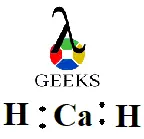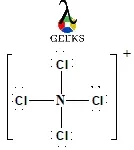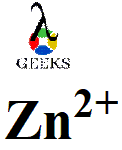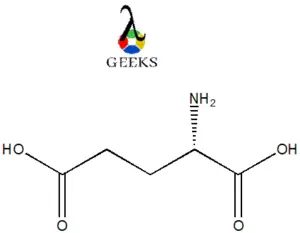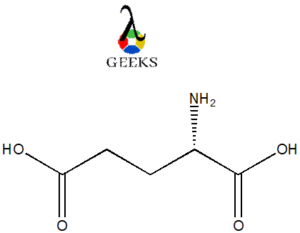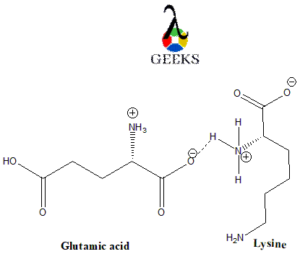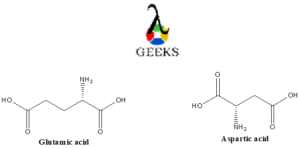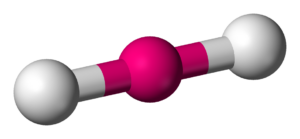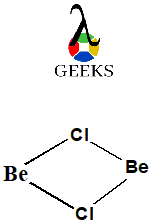In the present article, we will study the dynamic equilibrium and its related aspects.
Dynamic equilibrium refers to that state of the system where the rate of both forward and backward reactions become equal and hence, concentrations become constant. However, the whole system keeps moving at the microscopic level. Therefore, it is known as Dynamic equilibrium.
What is concentration in dynamic equilibrium?
The term concentration simply refers that how many moles of reactants are consumed in the reaction mixture. Likewise, how much amount of products are forming as the outcome of the reaction.
Generally, a dynamic equilibrium is established when the rate of reactions on the left side becomes equal to the right side of the reaction. Let’s understand the meaning of concentration by taking an example:
NaCl(s) ⇌ Na+(aq) + Cl–(aq)
[a] [b] [c]
Here, in the present reaction dissolution of NaCl salt is taking place and the terms [a], [b] and [c], are representing the amount of the particular chemical species participating in the given reaction where the sigh ⇌ refers to the formation of dynamic equilibrium.
Is concentration equal in dynamic equilibrium
In the case of dynamic equilibrium, concentrations of reactants or products may or may not be equal to each other. Generally, a dynamic equilibrium refers to a system in a steady state ie all the variables participating in the reactions are the same and stay unchanged over time i.e. the rate of both the reactions are the same.
However, it is common to misunderstand about the concentrations in the dynamic equilibrium as a question: is dynamic equilibrium a concentration is always arises.
if you observe any reaction in a dynamic equilibrium state, it seems that the concentration of reactants and products is constant. But in actuality, reactions keep going that are unable to observe by the naked eyes of the observer.

This is because during the dynamic equilibrium the molar concentrations of the reactants become equal to the concentration of the product. Hence, overall the concentration of the whole reaction becomes constant.
How do you find the concentration of a solution at dynamic equilibrium?
If in a particular reaction, the value of the equilibrium constant is given then the equilibrium concentrations can easily be determined and vice versa.
Let’s find out the equilibrium concentrations by following the above steps:
1.Write down the balanced equation of the given reaction and note down whether in the intended equation concentrations are given in partial pressure or moles.
2. Write an equation for the expression of the equilibrium constant ie Kc= [R]/[P]
Here, Kc = equilibrium constant, [R] = concentration of reactant specie and [P]= concentarion of product species.
Now let’s solve an example by using the above-mentioned steps:
Example:
The equilibrium constant for the reaction N2(g) + 3H2(g) ⇋ 2NH3(g) is 6.0 * 10-2 and the the concentration for hydrogen gas and ammonia are 0.25mol/L and 0.06mol/L respectively. Calculate the concentration of N2 at the equilibrium.
Solution:
The expression for the equilibrium constant is
KC = [NH3]2
[N2] [H2]3
By equating the above values in the given formula of the equilibrium constant, we get
0.06 = [0.06]2
[N2] [0.25]3
[N2] = [0.06]2
[0.06] [0.25]3
[N2] = 3.84 mol/L
Does concentration affect dynamic equilibrium?
Yes, concentration is an important factor for dynamic equilibrium (wikipedia). This is because when the concentrations of both reactants and products become constant only then equilibrium is established.
How does concentration affect dynamic equilibrium?
The dynamic equilibrium shifts towards the right side when the concentration of reactants increases. Likewise, increased product concentration shifted the equilibrium towards the left side.
Let’s understand the effect of concentration on the dynamic equilibrium with an illustration.
Fe3+ (aq) + SCN– (aq) ⇌ [FeSCN]2+
(Pale yellow) (colorless) (Reddish brown)
Now, write down the equilibrium constant for the above reaction:
KC = [FeSCN]2+
[Fe3+] [SCN–]
Let’s add potassium thiocyanate (KSCN) to the reactant side as KSCN is a source of thiocyanate, and the colour of the solution becomes darkened immediately due to the formation of more [FeSCN]2+.
Likewise, if we added any source of Fe3+, then again we get similar results in the reaction mixture as the equilibrium will be shifted towards the forward (right side) due to the formation of more [FSCN]2+.
On the other hand, if we add some potassium ferrocyanide, then it is observed that the colour of the solution becomes less dark which indicates that [FSCN]2+ have changed to [Fe3+] [SCN–] ie equilibrium shifted towards the backward direction.
Why are dynamic equilibrium and concentrations not equal?
Dynamic equilibrium and concentrations are two different opposite factors although they are interrelated but still two different terms. In the reaction, Dynamic equilibrium is formed only when the rate of both sides of the reaction becomes equal.
Let’s consider a hypothetical equation to get a clear picture.
[R] ⇌ [P]
The above reaction is indicating that equilibrium is established whereas the term [R] and [P] are representing the concentrations of products and reactants respectively.
What is a non-equilibrium concentration?
In a non-equilibrium state, there is no equilibrium formed between the forward reaction and the backward reaction.
Hence, concentrations of both reactants and products do not become constant. Therefore, concentrations are called non-equilibrium concentrations.
Frequently asked questions:
How do distinguish between the dynamic and static equilibrium?
| Static equilibrium | Dynamic equilibrium |
| Irreversible in nature | Reversible in nature |
| Reactions are stopped | Reactions are kept going but not able to observe by the observer with naked eyes. |
| The rate of reactions involved in static equilibrium is considered to be zero. | Rate of the forward reaction= rate of the backward reaction. |
| It can occur in both systems whether closed or open | It occurred only in the closed system |
What are the factors which affect dynamic equilibrium?
- Amount of reactants and products
- Pressure
- Temperature
- Change in Volume
Does temperature change the dynamic equilibrium direction?
As per the Le-Chatelier principle (Wikipedia), if a reaction is endothermic in nature then if we enhance the temperature of the system increases, the equilibrium will be shifted towards the forward direction provided that the.
On the other hand, if the intended reaction is exothermic in nature, then the direction of the equilibrium will be in backward reaction.
What do you mean by the homogenous equilibrium?
As term homo refers to the same. Hence homogenous equilibrium is formed when the state of reactants and products are the same in the given reaction.
For example, in the above reactions, all the chemicals are in the same phase. Hence a homogenous equilibrium.
NO2(g) + CO(g) ⇌ NO(g) + CO2(g)
What do you understand by heterogeneous equilibrium?
As hetero refers to a different state. Hence heterogeneous equilibrium is formed when the state of reactants and products are different in the given reaction.
For example, in the above reactions, all the chemicals are in a different phase. Hence a heterogeneous equilibrium.
4 Fe(s) + 6 H2O(l) + 3O2 (g) → 4 Fe(OH)3 (s).
What do you understand by equilibrium constant and how is it related to the terms Kc?
Equilibrium constant represented by K and represented as ; K = Concentration of products/ concentrations of reactants. However, the term K is replaced by KC depending upon the concentrations of the products and reactants in the given reaction.
For example, if the reactants and products are given in terms of molar concentrations then K is replaced by KC.
4NH3 (g) + 5O2 (g) ⇌ 4NO (g) + 6H2O (g)
Kc= [NO]4 [H2O]6
[NH3]4 [O2]5
Conclusion
To conclude, we learn about the meaning of the dynamic equilibrium, how it is related to the concentrations and the factors affecting it.

